The fall fertility program is usually perceived as a last minute supplementation to arm the plants with additional minerals ahead of the winter dormancy. With perennials in particular, this is perceived as a frontloading of minerals to support next year’s growth. This article reviews the value and necessity of a sound fall fertility program that, if done correctly, has the ability to set many additional flower buds for the coming season.
Popular Beliefs About Budding Times Are Mistaken
The current literature and professional belief is that flower buds for the coming spring and summer must be differentiated by June of the previous season. There is partial credence to such a statement. However, this statement is only true for growers who practice imbalanced nutrition.
Our research over the last 15 years has repeatedly found a number of deciduous perennial species to be capable of differentiating flower buds well into November of the previous season.
Secondly, pushing the trees into dormancy in late summer or early fall is practiced due to fear of incurring early freeze damage and/or the onset of bacterial canker. However, this practice is only necessary for growers who push their trees hard with frequent applications of N and minimal attention to overall nutritional balances. Instead, our growers are placed on a field-specific, balanced remedial program that leaves the door open for minor implementation of historically utilized programs.
Programs for Resisting Bacterial Canker
Diseases such as bacterial canker have a history of infections following freeze damage to the buds and bud unions. When the temperatures are such that freezing occurs, the buds are known to exude plant sap. The bacterium Pseudomonas syringae, which is the causal organism of bacterial canker, is capable of utilizing the plant sap, reaching logarithmic expansion in population and inciting disease. The nature of sap from weakened trees is one of simplicity and limited types of constituents. When the tree’s physiological efficiency is low, many deleterious events follow, including the opening of susceptibility to selective pathogens under specific sets of predisposing events.
Conversely, when the tree’s physiological efficiency is kept high, the constitution of the plant sap is markedly higher and complex in types of constituents. The pathogen responds to this complexity of constituents with difficulty and is prevented from mounting an aggressive infection.
Using almonds as a model perennial crop, we have worked with orchards that were manifesting low numbers of flower buds in late August. By analyzing the soil, we were able to get a closer estimate of the overall nutritional status. Thereafter, we followed with a field-specific fertility programs as well as important and often underrated selective foliar programs. These trees continued to differentiate flower buds into mid-November.
If you take the time to examine your trees for shoot growth that has occurred late into the season–October or November—you will often see flower buds differentiated and forming for next spring’s crops.
Developing a Program Based on Soil and Water Sampling
If time permits, secure representative soil samples for both chemistry analysis and for biological characterization. If the water quality is not known, secure about a sample that is representative of the lot.
Then, contact us and request a Complete Analysis. We will then generate a full season’s program that will remedy any diagnosed deterrents.

